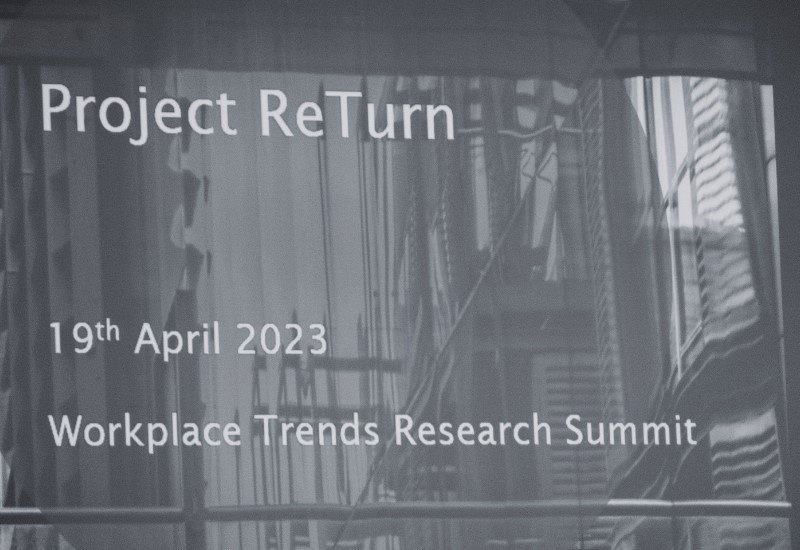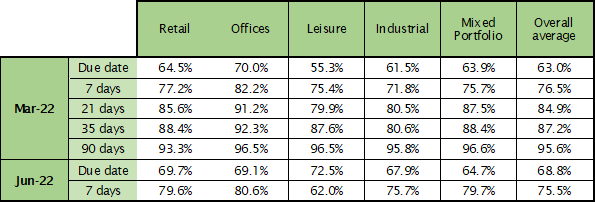As the Educational Sponsor of Realcomm’s London CIO Forum 2023, Remit Consulting helped organise the event, which was held recently at Grosvenor’s offices in the West End.
Realcomm is known for its focus on automated business solutions and cutting-edge views on the market and new technologies, and with speakers from Google, Grosvenor, Argent and Invesco, this event brought to light some key market impacts worth noting.
Not another tech solution. The CRE tech market is overly saturated.
The Technology Bubble has reached corporate real estate, as explained by Justin Segal, the president of Boxer Property. In a market where there is already a high volume of solutions, many CRE companies are integrating solutions which they may not need. Is this a case of FOMO or perhaps a desire to be different? Either way, Justin’s key message was that in the current economic environment, it is more crucial than ever to fully identify the problem first, before jumping to solutions. The message is “don’t be sold on a shiny new idea or sales pitch”, highlighting that such an approach is the best way for technology to help keep costs low and, therefore, support business survival.
Short term pain, long term gain. Will the promise of cutting costs convince the industry to be more environmentally conscious?
Isn’t it funny how some of the most popular topics are those which are least understood? That is often the case regarding the topic of ESG in the property industry. It is widely understood that ‘going green’ more often than not comes at a cost; retrofitting and new technology traditionally have hefty price tags. The problem persists that only with mass adoption will these prices fall, but no one likes to pay more now to help others pay less later.
This conundrum, discussed by Helena Rivers, director at AECOM, is not one which is easily fixed but increasing peer pressure to go green should start to outcast those who won’t pay for these critical technologies. If cheaper technologies of the future aren’t enough to convince the industry, hopefully reputational damage of the present should get ESG taken seriously.
Lock the doors! How hacking into buildings’ systems has become a piece of cake.
Ken Munro from Pen Test Partners spoke at Realcomm about his recent work to test buildings’ security against hackers, by hacking into them himself. With a large volume of technology being installed in buildings without proper security, this is a potential threat that building, property and asset managers must be aware of.
Consider the volume of technology in your office; microphones in board rooms, webcams on your second (or third) screen. If your building’s technology has not been made secure, hackers can simply stand outside a building and connect to various devices without any issue, as Ken had discovered during his point-proving hacking mission. The message is clear: everyone should check and secure the technology in their building to avoid being caught out by a hacker with perhaps more damaging intentions than just watching you eat your sandwich at lunch!
Forcing attendance on Fridays. Some companies are stamping down on office attendance to boost productivity.
Isha Jain, Head of Digital & Technology for CBRE UK & Ireland, explained how the real estate giant is now putting many of their meetings on Fridays to encourage five days per week for employees. This seems like a radical idea, with people questioning whether in-person attendance is how we should measure success. What if people are more productive at home or if Fridays are logistically difficult for people?
While it was only three years ago that this would be the norm, the dust is clearly not yet settling on the in-out-in-out dance of office attendance. It was interesting to see the CBRE office at the evening event following the conference. It is definitely an “all singing, all dancing” property, so we couldn’t blame them for being there the whole time!
A PROPTECH A DAY – how Grosvenor manages to see 500 new proptechs each year.
You thought you just needed an apple a day to keep good health, but Grosvenor’s innovation team takes business health to new ambitions by encouraging frontline teams – AM, PM, FM – to trial innovative ideas and have set aside money for every team to do this. All each team needs to do is fill out a one-page form on how they will trial the idea. This move has been a great success with the innovation teams having seen more than one new start up every day in 2022 – over 500 of them in total!















































